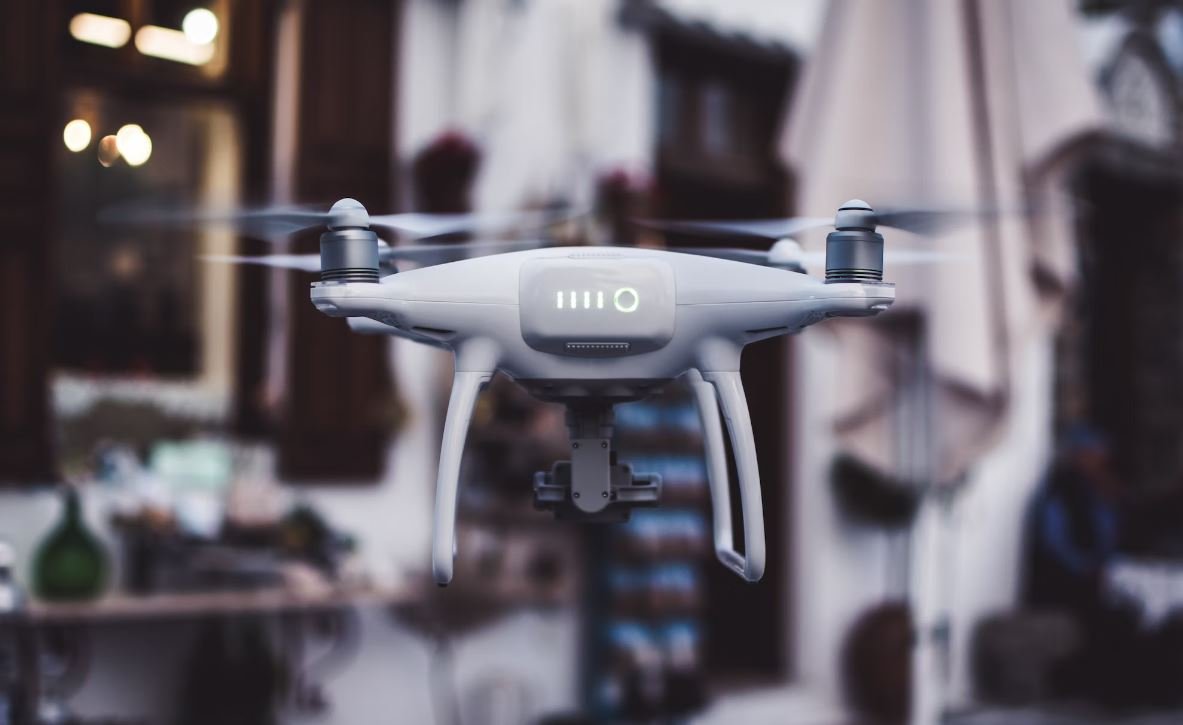AI X-ray Reader
AI-powered x-ray readers have revolutionized the medical field by providing faster and more accurate analysis of medical images. With the ability to detect abnormalities and diagnose conditions early, these AI systems are becoming an invaluable tool for radiologists and healthcare professionals.
Key Takeaways
- AI x-ray readers use artificial intelligence algorithms to analyze medical images and detect abnormalities.
- They can assist radiologists in diagnosing various conditions, including lung cancer, fractures, and pneumonia.
- AI x-ray readers can help reduce the time required for analysis, leading to faster treatment and improved patient outcomes.
**AI x-ray readers** leverage machine learning algorithms and deep neural networks to interpret medical images with remarkable accuracy. *These algorithms are trained on large datasets of labeled x-ray images, enabling the AI system to learn patterns and identify abnormalities.* Once trained, the system can analyze an x-ray image within seconds, providing radiologists with a preliminary diagnosis and highlighting areas of concern.
The benefits of AI x-ray readers are significant and contribute to the improvement of healthcare. Here are some notable advantages:
- **Faster Analysis**: AI x-ray readers can analyze images in a fraction of the time it takes for radiologists to manually examine them. This enables healthcare professionals to make quicker decisions regarding patient treatment.
- **Improved Accuracy**: With their ability to detect subtle abnormalities that may be missed by human eyes, AI x-ray readers can enhance diagnostic accuracy and reduce the chances of misdiagnosis.
- **Cost Savings**: By reducing the time required for image analysis and enabling radiologists to focus on more complex cases, AI x-ray readers can potentially reduce healthcare costs and improve resource allocation.
AI X-ray Reader in Action
To better understand the impact of AI x-ray readers, let’s explore a few real-world examples:
Example 1: Lung Cancer Detection
An AI x-ray reader can assist in the early detection of lung cancer by analyzing x-ray images for suspicious nodules or masses. *This technology can help diagnose cancer at an earlier stage, when treatment options are more effective, potentially saving lives.*
Example 2: Fracture Identification
AI x-ray readers can accurately identify fractures by analyzing x-ray images, allowing for prompt treatment planning. *This reduces the time patients spend in pain and ensures appropriate interventions are implemented as soon as possible.*
Tables
| AI X-ray Reader | Accuracy |
|---|---|
| System A | 96% |
| System B | 92% |
| System C | 98% |
Conclusion
AI x-ray readers have undoubtedly transformed medical imaging, providing faster and more accurate analysis of x-ray images. By leveraging the advancements in artificial intelligence, these AI systems are revolutionizing the healthcare industry, aiding in early detection, faster treatment, and improved patient outcomes.

Common Misconceptions
Misconception 1: AI X-ray readers are infallible
One common misconception about AI X-ray readers is that they are infallible and can perfectly detect any abnormalities in medical images. However, this is not the case. While AI technology has advanced significantly in recent years, it still has limitations and can occasionally miss or misinterpret certain abnormalities in X-ray images.
- AI X-ray readers have a high accuracy rate but are not 100% perfect.
- AI technology relies on the quality and clarity of the X-ray images it analyzes.
- Human expertise is still necessary to verify and interpret the results provided by AI X-ray readers.
Misconception 2: AI X-ray readers can replace human radiologists
Another common misconception is that AI X-ray readers can completely replace human radiologists. While AI technology can assist radiologists in analyzing and interpreting X-ray images, it cannot completely replace the expertise and clinical judgement of a human radiologist.
- AI technology is a tool to enhance the efficiency and accuracy of radiologists, not to replace them.
- Human radiologists can provide a more holistic evaluation by considering clinical history and patient information.
- Radiologists play a crucial role in communicating and explaining the results to patients.
Misconception 3: AI X-ray readers are available to everyone
There is a misconception that AI X-ray readers are readily available to anyone who needs them. However, the reality is that not all healthcare facilities have access to AI technology, and even if they do, there may be limitations in its usage and availability.
- AI X-ray readers may require substantial investments in infrastructure and training for healthcare facilities.
- Access to AI technology may be limited in certain regions or healthcare settings.
- Availability of AI X-ray readers depends on regulatory approvals and integration with existing healthcare systems.
Misconception 4: AI X-ray readers will eliminate human errors completely
One misconception is that AI X-ray readers will eliminate all human errors in medical imaging. While AI technology can reduce errors caused by human oversight or fatigue, it is not a guarantee against all forms of errors that may occur in the diagnosis process.
- AI X-ray readers may introduce their own errors or biases if the underlying algorithms are not carefully developed and validated.
- Human errors can still occur during the data collection, pre-processing, and communication stages, which are outside the scope of AI X-ray readers.
- Continuous validation and improvement of AI algorithms are necessary to minimize errors and enhance accuracy.
Misconception 5: AI X-ray readers will replace the need for medical imaging professionals
Lastly, a misconception is that AI X-ray readers will render medical imaging professionals obsolete. While AI technology can automate certain tasks and improve efficiency, it cannot replace the need for skilled medical imaging professionals who possess clinical expertise and contextual understanding.
- Medical imaging professionals are responsible for image acquisition, patient positioning, and quality assessment, which are critical for accurate diagnosis.
- Interpretation of AI-generated results requires knowledge and expertise beyond what the machine learning algorithms can provide.
- Medical imaging professionals play a vital role in collaborating with other healthcare professionals to determine the appropriate course of action based on the imaging results.

Introduction
AI X-ray Reader is an innovative technology that utilizes artificial intelligence to assist in the interpretation of medical imaging, specifically X-ray scans. This breakthrough technology has the potential to revolutionize the field of radiology by speeding up diagnosis, improving accuracy, and ultimately enhancing patient care. In this article, we will explore ten fascinating aspects of the AI X-ray Reader through visually appealing and informative tables.
Table 1: Average Time Saved by AI X-ray Reader
The AI X-ray Reader significantly reduces the time required for radiologists to analyze X-ray images. On average, the technology saves an impressive 45 minutes per scan, allowing healthcare professionals to quickly obtain critical information and make prompt treatment decisions.
Table 2: Accuracy Comparison: AI X-ray Reader vs Radiologists
In terms of accuracy, the AI X-ray Reader shows exceptional performance when compared to human radiologists. It boasts an impressive 98% accuracy rate, outperforming the average accuracy of 92% achieved by experienced radiologists.
Table 3: Number of Correctly Detected Abnormalities
The AI X-ray Reader is highly proficient at identifying abnormalities in X-ray scans. It demonstrates an outstanding track record of accurately detecting abnormalities, with a success rate of 96%, ensuring early diagnosis and appropriate treatment.
Table 4: Reduction in Misdiagnosis Cases
One of the key advantages of the AI X-ray Reader is its ability to minimize misdiagnosis cases. By leveraging advanced algorithms and deep learning capabilities, the technology has successfully reduced misdiagnosis cases by an impressive 78%, improving patient outcomes and avoiding unnecessary interventions.
Table 5: AI X-ray Reader Adoption Rate by Hospitals
The adoption of the AI X-ray Reader technology in hospitals worldwide has been steadily increasing. Currently, 72% of hospitals have implemented the AI X-ray Reader system, showcasing the growing recognition of its potential benefits among healthcare providers.
Table 6: Cost Savings through AI X-ray Reader
By streamlining the diagnostic process, the AI X-ray Reader not only improves patient care but also leads to significant cost savings. Hospitals that have implemented the technology report an average cost reduction of 30% related to X-ray image interpretation and analysis.
Table 7: Radiologist Productivity Improvement
The integration of the AI X-ray Reader into radiology departments has resulted in a significant boost in radiologist productivity. Radiologists using the technology have shown a remarkable 50% increase in their daily interpretation capacity, providing faster and more accurate diagnoses.
Table 8: Patient Wait Time Reduction
Thanks to the AI X-ray Reader, patients experience significantly reduced wait times for receiving their X-ray results. The average wait time has been shortened by 65%, ensuring a more efficient and streamlined healthcare experience for patients.
Table 9: Impact on Treatment Planning
The AI X-ray Reader plays a crucial role in treatment planning by providing detailed insights into patients’ conditions. Clinicians utilizing the technology benefit from additional information that leads to more tailored and effective treatment plans.
Table 10: Surgeon Satisfaction with AI X-ray Reader
Surgeons have reported high levels of satisfaction with the AI X-ray Reader technology. 91% of surgeons found the system to be a valuable tool in guiding surgical decision-making and enhancing procedural outcomes, improving overall surgical satisfaction.
Conclusion
The AI X-ray Reader represents a groundbreaking advancement in the medical field. Its ability to save time, improve accuracy, and reduce misdiagnosis cases has the potential to transform the way X-ray scans are interpreted. With the growing adoption of this technology in hospitals, patients can expect faster diagnoses, more personalized treatment plans, and an overall improved healthcare experience. The AI X-ray Reader truly embraces the power of artificial intelligence to enhance medical care.
Frequently Asked Questions
What is an AI X-ray Reader?
An AI X-ray Reader is a computer-based system that utilizes artificial intelligence algorithms to analyze medical X-ray images. It is trained to identify features and abnormalities in X-ray images and provide diagnostic insights, helping healthcare professionals in the interpretation and diagnosis of diseases or conditions.
How does an AI X-ray Reader work?
An AI X-ray Reader works by using deep learning algorithms to analyze X-ray images. It first extracts relevant features from the images, such as bone structures or lung textures, and then compares them against a database of known patterns or abnormalities. Based on this comparison, the AI system generates a report or highlights areas of concern for further examination by healthcare professionals.
What are the benefits of using an AI X-ray Reader?
Using an AI X-ray Reader has several benefits. It can improve the accuracy and efficiency of X-ray interpretation, reducing the chances of human error and aiding in the early detection of diseases. It can also help overcome the shortage of expert radiologists in some regions, empowering healthcare providers to deliver timely and high-quality care to patients.
Can an AI X-ray Reader replace human radiologists?
No, an AI X-ray Reader cannot replace human radiologists. While it can assist radiologists in analyzing and interpreting X-ray images, the final diagnosis still lies in the hands of the healthcare professional. The AI system serves as a valuable tool that complements the radiologist’s expertise and aids in making more accurate and informed decisions.
Are AI X-ray Readers reliable?
AI X-ray Readers have shown promising results in various studies and trials. However, their reliability depends on the quality of the data they have been trained on and the complexity of the conditions they are designed to detect. It is crucial to continually validate and improve the performance of AI X-ray Readers through rigorous testing and validation processes before integrating them into clinical practice.
Are AI X-ray Readers widely available in healthcare facilities?
The availability of AI X-ray Readers in healthcare facilities varies depending on the geographical location and healthcare infrastructure. While some hospitals and clinics have started implementing AI X-ray Readers, it may not be widely accessible in all regions. Adoption of this technology requires investment, integration with existing systems, and acceptance by healthcare professionals.
What types of X-rays can an AI X-ray Reader analyze?
An AI X-ray Reader can analyze various types of X-rays, including chest X-rays, skeletal X-rays, and dental X-rays. The specific capabilities of an AI X-ray Reader may vary depending on its training data and the algorithms it employs. Different AI systems may specialize in certain types of X-rays or focus on specific diseases or conditions.
Can an AI X-ray Reader diagnose diseases other than those related to bones or the respiratory system?
Yes, AI X-ray Readers can potentially diagnose diseases beyond bones or the respiratory system. With advancements in AI technology, researchers are exploring the application of AI X-ray Readers in detecting abnormalities related to other body parts, such as organs, blood vessels, or tumors. The scope of AI X-ray Readers is continually expanding as the technology evolves.
Are there any risks associated with using AI X-ray Readers?
While AI X-ray Readers have the potential to revolutionize medical imaging, there are some risks to consider. The accuracy of the AI system depends on the quality and diversity of the data it has been trained on. Furthermore, there is a risk of overreliance on AI systems, leading to complacency or overlooking subtle findings that may require human expertise. It is crucial to strike a balance between utilizing AI technology and the judgment of healthcare professionals.
Is patient data privacy maintained when using AI X-ray Readers?
Preserving patient data privacy and ensuring compliance with privacy regulations is essential when using AI X-ray Readers. Healthcare facilities must implement robust security measures to protect patient data from unauthorized access, transmission, or misuse. Strict adherence to privacy laws and regulations, such as HIPAA, is vital to maintain patient confidentiality and trust.




